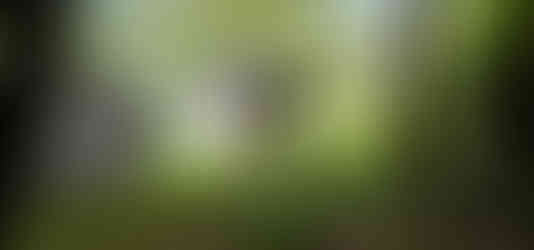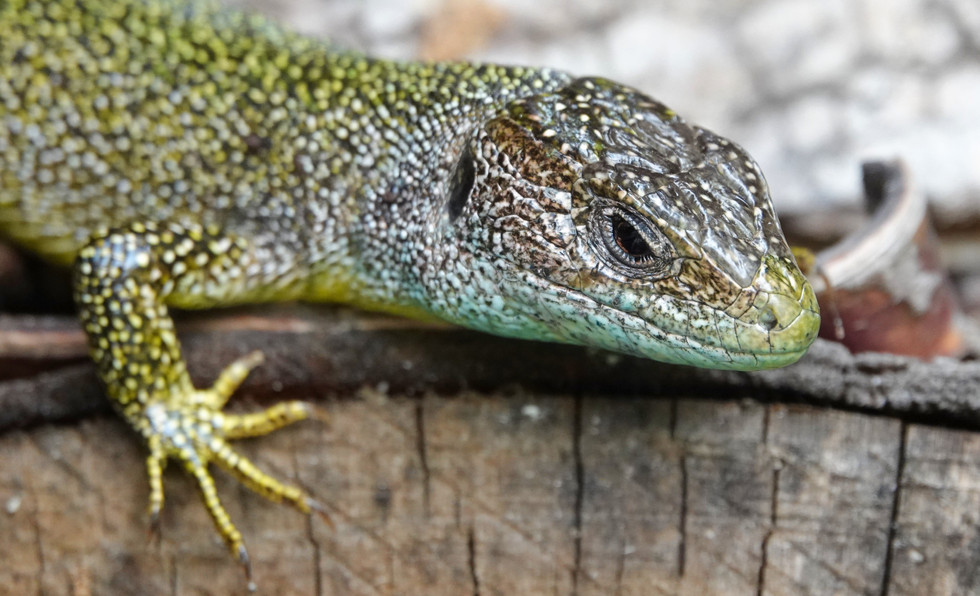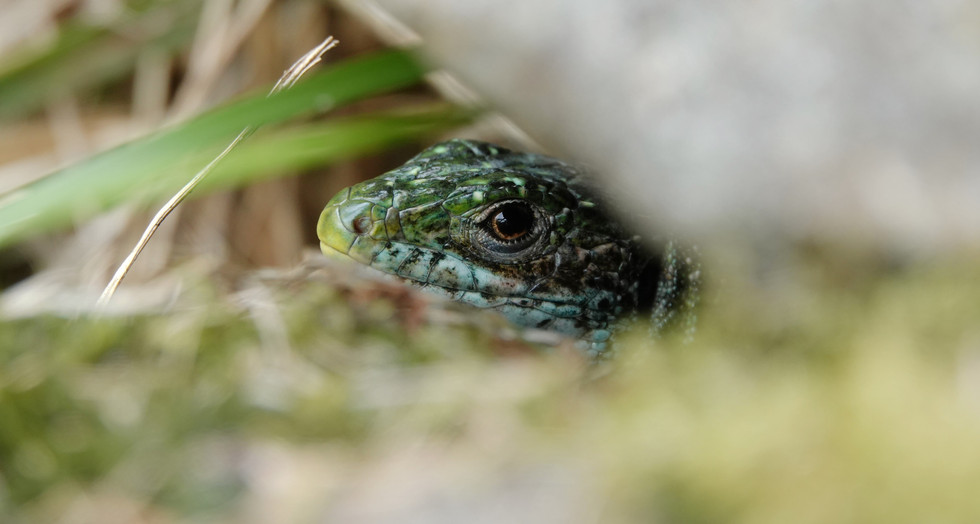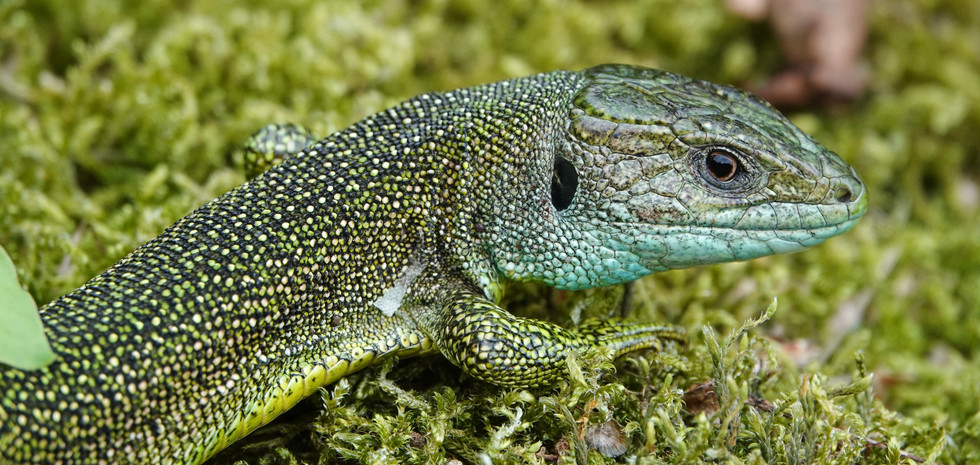Western Green Lizards in the Maggia Valley
- Lacerta Bilineata

- Feb 23, 2024
- 4 min read
Updated: Apr 23

The Maggia Valley in the canton of Ticino is well-known for its biodiversity among Swiss nature enthusiasts, and reptiles that are otherwise rare in Switzerland - such as my favorite, the western green lizard (Lacerta bilineata) - feel particularly at home there.
In September 2023, I had the opportunity to go on a short hike in this natural paradise, and despite less than ideal weather conditions (the sky was mostly cloudy), I was able to observe and photograph the beautiful western green lizards of the "Vallemaggia" at close range.
I had come here at the invitation of a friend, and the trail she chose for our little expedition led us through old settlements of mostly abandoned "rustici" - as the locals call the ancient stone houses that are typical of Ticino - and it's particularly these crumbling buildings that provide such ideal conditions for lizards.

These ruins offer the animals countless hiding places and spots to bask in the sun, and because many plants and lichens also grow on and between these stones, the western green lizards remain excellently camouflaged here despite their intense green color.

It wasn't long before I spotted the first Lacerta bilineata on a caved-in wall - a subadult female - but I have to admit that my friend was so familiar with the terrain that she was able to predict exactly on which pile of stones we would find a western green lizard (she actually knew most of the - very territorial - individuals through her many previous walks in the area and had even begun to give some of them names :-)



Rarely have I seen so many western green lizards as I did during this short hike in the Maggia Valley! Despite the overcast sky, we could feel the heat of the sun coming through the clouds; the air was still as warm as it normally would be in summer, and these impressive reptiles - the largest individuals reach lengths of more than 40 cm - were warming themselves on the stones and rocks on both sides of the path.
Although western green lizards are not quite as noticeable in autumn as they are during mating season in spring (from around April to June, the face and throat of most males appear in a magnificent, striking blue), I was impressed by the gorgeous colors of this local population.
The lizards weren't just resting on the warm stones of the walls and the rustici along the path, but also on logs and on the dry moss, where they were particularly well camouflaged.
I was especially taken with an adult female Lacerta bilineata that was searching for food in the flowers of a beautiful trumpet vine that was growing over the roof of a rustico. In the first image below you can see me (captured by my companion with her smartphone) trying to get a good shot of this "flower lizard".
After this special photo session, we continued to be greeted by many more representatives of this extraordinary lizard species, and from time to time also by some of the much smaller common wall lizards (Podarcis muralis).
As a nature aficionado and lizard fan, this hike in the Maggia Valley was a magical experience for me. The high density of the Lacerta bilineata population here was very unusual, as was the fact that the animals often didn't flee when we approached them.
Both of these observations I'd explain through the remoteness of the habitat: there are no cats (by far the biggest threat to lizards in Switzerland - apart from intensive farming and habitat loss), cars or mowing machines near that hiking trail.
In this remote, very intact seeming ecosystem, the reptiles have less reason to be constantly vigilant and "jumpy", as they face fewer dangers here, both in general as well as from humans in particular. It also struck me that we saw only one single lizard with a missing tail; this is in stark contrast to the lizard population around my village - inhabited by many cat owners - in Malcantone, where most of the adult lizards have a missing or partly re-grown tail.
It seems obvious that natural predators such as snakes, birds of prey, martens, weasels and foxes, which are certainly abundant in the Maggia Valley, are not a threat to the stability of the Lacerta bilineata population there, and the lizards have clearly become accustomed to the many hikers.
I even think it possible that the heavily frequented hiking trails are partly the reason why the western green lizards of the Maggia Valley do so well there, because the constant presence of humans probably keeps most of the predators that prey on lizards during the day at a distance.
Be that as it may, the Maggia Valley has turned out to be a virtual lizard paradise, and I can hardly wait to return in spring for another "expedition" :-)

In case you're interested, you'll find my best nature photos here
































































Thank you for sharing these photos "Jungle Mike" ;o) The abandoned village is indeed a hidden treasure. Look forward to you next adventure.
Thank you so very much. Wonderfully written, and ah... thos photos!